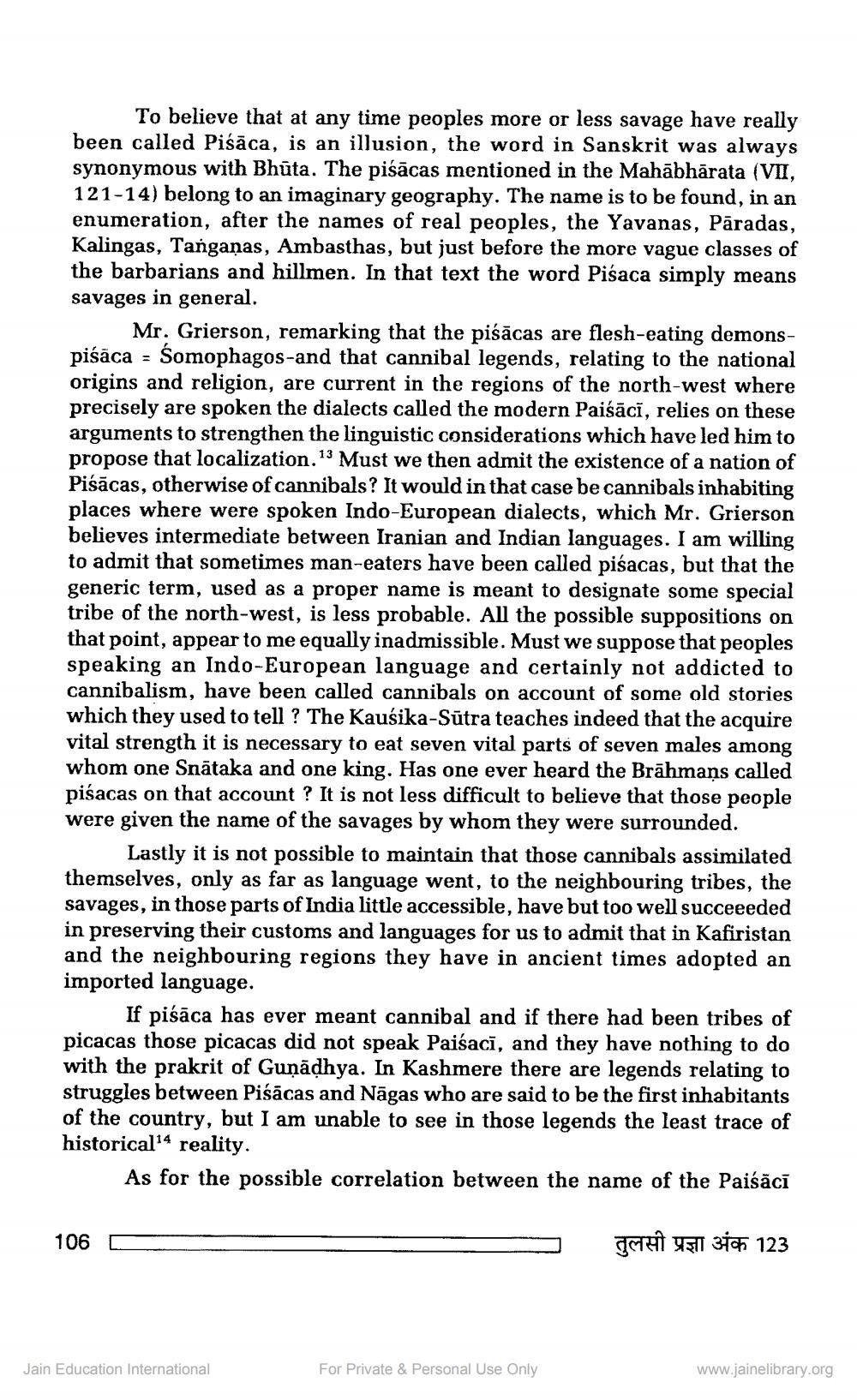________________
To believe that at any time peoples more or less savage have really been called Pisaca, is an illusion, the word in Sanskrit was always synonymous with Bhūta. The piśācas mentioned in the Mahābhārata (VII, 121-14) belong to an imaginary geography. The name is to be found, in an enumeration, after the names of real peoples, the Yavanas, Pāradas, Kalingas, Tanganas, Ambasthas, but just before the more vague classes of the barbarians and hillmen. In that text the word Pisaca simply means savages in general.
Mr. Grierson, remarking that the piśācas are flesh-eating demonspiśāca = Śomophagos-and that cannibal legends, relating to the national origins and religion, are current in the regions of the north-west where precisely are spoken the dialects called the modern Paiśācī, relies on these arguments to strengthen the linguistic considerations which have led him to propose that localization. 13 Must we then admit the existence of a nation of Pisacas, otherwise of cannibals? It would in that case be cannibals inhabiting places where were spoken Indo-European dialects, which Mr. Grierson believes intermediate between Iranian and Indian languages. I am willing to admit that sometimes man-eaters have been called pisacas, but that the generic term, used as a proper name is meant to designate some special tribe of the north-west, is less probable. All the possible suppositions on that point, appear to me equally inadmissible. Must we suppose that peoples speaking an Indo-European language and certainly not addicted to cannibalism, have been called cannibals on account of some old stories which they used to tell? The Kausika-Sutra teaches indeed that the acquire vital strength it is necessary to eat seven vital parts of seven males among whom one Snātaka and one king. Has one ever heard the Brahmans called pisacas on that account? It is not less difficult to believe that those people were given the name of the savages by whom they were surrounded.
Lastly it is not possible to maintain that those cannibals assimilated themselves, only as far as language went, to the neighbouring tribes, the savages, in those parts of India little accessible, have but too well succeeeded in preserving their customs and languages for us to admit that in Kafiristan and the neighbouring regions they have in ancient times adopted an imported language.
If pisaca has ever meant cannibal and if there had been tribes of picacas those picacas did not speak Paiśaci, and they have nothing to do with the prakrit of Gunadhya. In Kashmere there are legends relating to struggles between Pisacas and Nāgas who are said to be the first inhabitants of the country, but I am unable to see in those legends the least trace of historical1 reality.
As for the possible correlation between the name of the Paiśācī
तुलसी प्रज्ञा अंक 123
106
Jain Education International
For Private & Personal Use Only
www.jainelibrary.org




